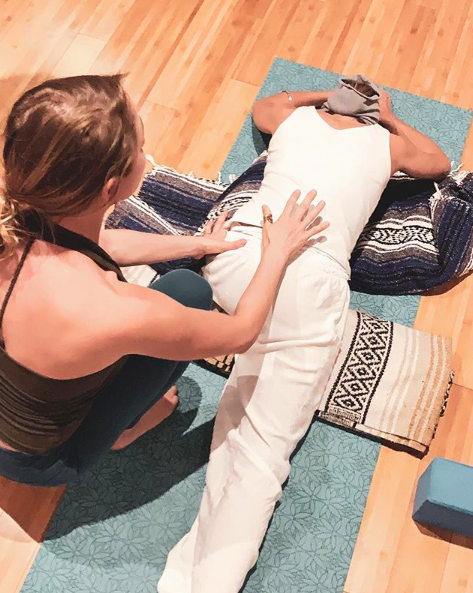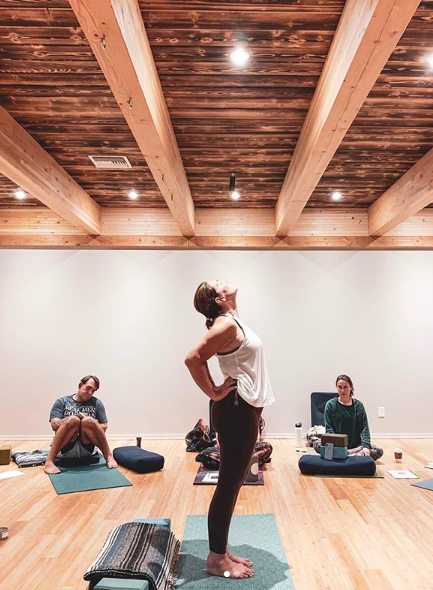Physiology of Trauma – A Yin Yoga Perspective Part 2: On Interception- Healing Trauma through Asana
By: Kali Basman
Read Part 1: Physiology of Trauma - A Yin Yoga Perspective on The Anatomy of Survival here.
layers of the brain
Yoga increases our activation of insula, which in part 1 I defined as the part of the brain which scans our physiological sensations and shuts down after trauma.
One critical aspect of healing trauma is body awareness - in yoga, this means knowing which muscles are being recruited and which are relaxing. What’s lengthening and what is compressing. Where the lines of energy are being drawn through an Asana.
This is the process of cultivating interoception: the sense of self anchored in the vital connection with our bodies. Interoception is the sense of the internal state of the system, allowing us to interpret sensation and how to navigate the emergence and occurrence of circumstances both internally and externally.
For survivors of trauma, establishing interoception in a rhythmic pattern is essential: feeling tension in a shape, and then the resolution, or relaxation, of tension after a pose is complete. In doing so the practitioner somatically understands the notion of impermanence in the body. You become more tapped in to when discomfort is manageable or overwhelming, and eventually realize the discomfort subsides.
Freud once said, “Memory of trauma acts like a foreign body which long after its entry must continue to be regarded as an agent that is still at work”. In a sense, trauma can makes you feel as if you are stuck forever in a helpless state of horror. While the trauma happened in the past, it can bubble up in the present at any point as the emotional brain continues to attach to past narrative and events.
Yoga, in turn, teaches you that sensations rise to a peak and then fall. Impermanence is key, you can anticipate the end of discomfort and strengthen your capacity to deal with distress. In contrast to timeless ever present experience of trauma, physical sensations are transient and respond to slight shifts in thinking, breathing, and body position (asana). We can tolerate a great deal of discomfort when we know its transitory, and we can also tolerate more when we don’t resist uncomfortable sensations.
“As we begin to re-experience a visceral reconnection with the needs of our bodies, there is a brand new capacity to warmly love the self. We experience a new quality of authenticity in our caring, which redirects our attention to our health, our diets, our energy, our time management. This enhanced care for the self rises spontaneously and natural, not as a response to a “should”. We are able to experience an immediate and intrinsic pleasure in self-care.”
- Stephen Core, Yoga and the Quest for the True Self.
At the core of trauma recovery is self-awareness – becoming in touch with the inner landscape and ephemeral nature of sensation.
“Most traditional therapies downplay or ignore the moment-to-moment shifts in our inner sensory world. But these shifts carry the essence of the organisms responses: the emotional states that are imprinted in the body’s chemical profile, in the viscera, in the contracted of the striated muscles of the face, throat, trunk and limbs. Traumatized people need to learn that they can tolerate their sensations, befriend their inner experiences, and cultivate new action patterns.”
- Bessen van der Kolk, The Body Keeps the Score
Want to practice with Kali and learn more about the anatomy of survival?
Learn more with her Advanced Principles in Yin, Yang & Mind Intensive Level II September 26-October 3, 2019.
About Kali:
International yoga teacher Kali Basman enriches the paradigm of Yin Yoga to integrate distinct aspects of Self into an innate wisdom practice to awaken a rich inner life and radiate with ritual. Her offering honors Yin Yoga as a tool to surrender to our intrinsic wholeness.
On the textured path of mindful healing, Kali is celebrated for her integration of the 5 Elements and Chinese Meridian Theory with self-inquiry, embodied Anatomy, Buddhist Philosophy of Equanimity, and sharp intellect.





